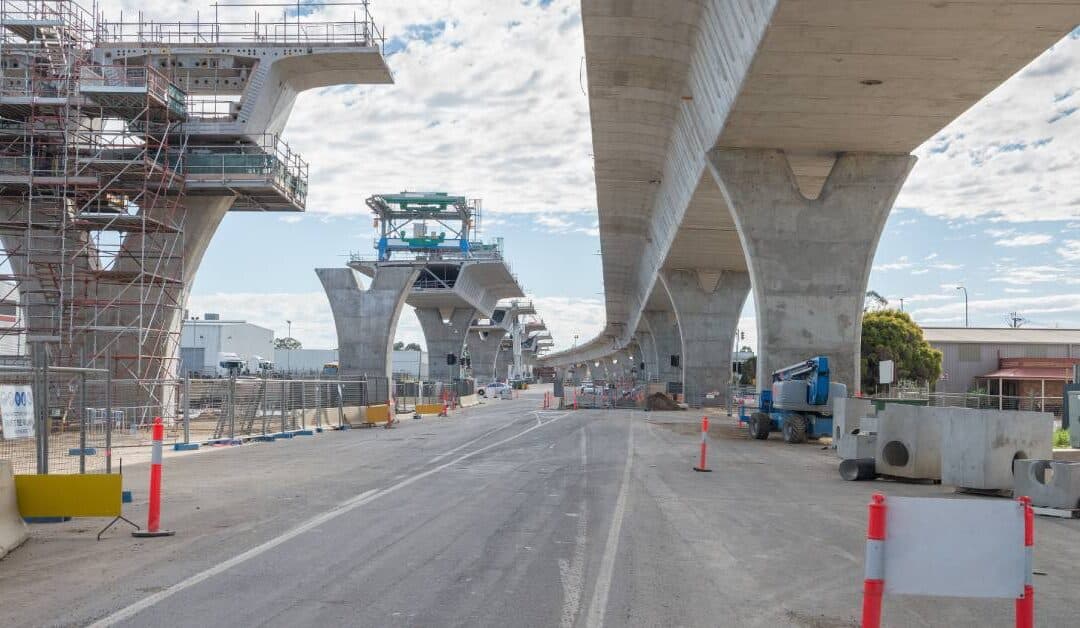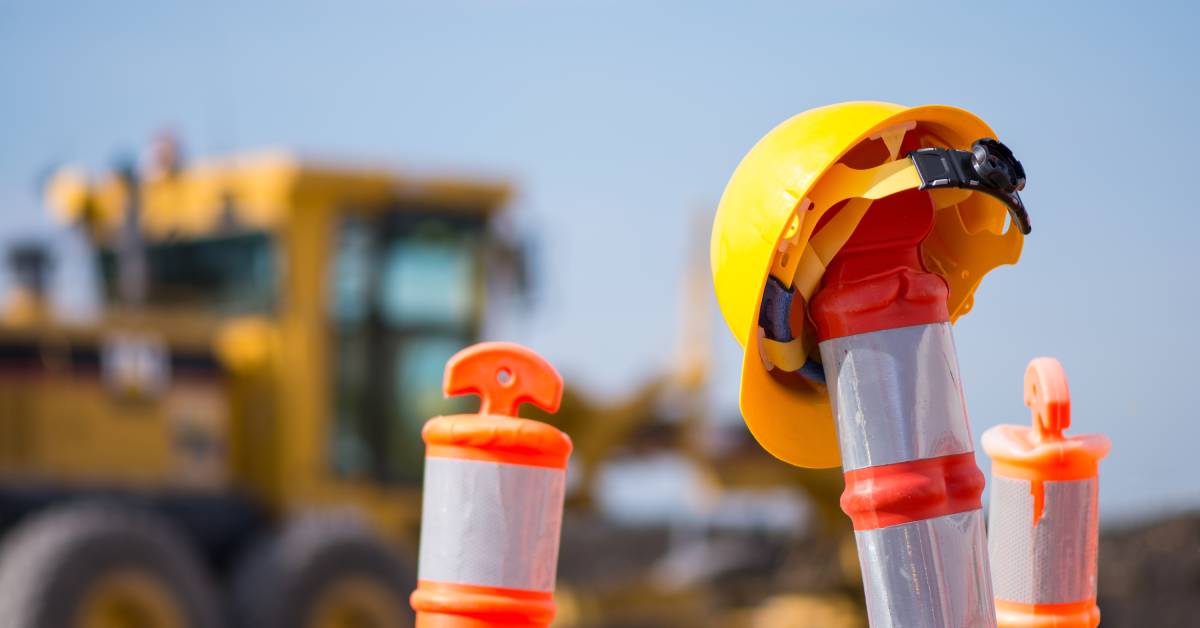Highway construction projects present unique challenges that demand unwavering attention to safety protocols. With the combination of heavy machinery and high-speed traffic, contractors must prioritize the safety of both workers and equipment.
Implementing proven safety measures not only safeguards your team but also enhances project efficiency and reduces costly incidents that can impact your bottom line. Follow these eight tips for greater safety on highway construction projects.
Possible Safety Problems on Highway Construction Projects
Accidents can happen on any construction project, and highway settings can present unique challenges to keeping everyone safe. Traffic accidents with fast-moving vehicles are a possibility, especially with unclear signage, insufficient barriers, or poorly marked work zones.
Adverse weather and low visibility can also present issues with oncoming traffic and worker visibility. The harder it is to see workers and oncoming cars, the more likely a collision or accident is to happen. Avoid all of these issues at your work site with these tips:
1. Create Traffic Control Plans
Effective traffic control is the foundation of highway construction safety. Create a clear plan that accounts for traffic patterns, heavy traffic times, and weather conditions. Start by conducting thorough site assessments during different times of day to understand traffic flow patterns. Additionally, work closely with local transportation authorities to establish appropriate lane closures, detour routes, and temporary traffic signals.
All traffic control devices should meet the Department of Transportation’s specifications and undergo thorough inspections throughout the project’s duration. Damaged or displaced signs, cones, and barriers create immediate hazards that require prompt attention.
2. Implement Personal Protective Equipment Protocols
Personal protective equipment (PPE) requirements for highway construction extend beyond standard construction gear. High visibility clothing is necessary when workers operate near moving traffic, along with hard hats, safety glasses, and steel-toed boots.
Establish clear PPE inspection procedures that workers perform before each shift. Create equipment replacement protocols, and consider the environment and weather when choosing PPE. For instance, hot weather may require cooling vests for workers or hydration breaks.
3. Establish Clear Communication Systems
Highway construction sites require multiple communication channels to coordinate between work crews, flaggers, and equipment operators. Radio communication systems should provide clear channels for emergencies, routine coordination, and traffic control updates.
Develop Communication Protocols
In the case of emergencies or communication needs, establish protocols that all team members should practice regularly. Emergency communication procedures must be immediately accessible to all workers, with backup systems available when primary communications fail.
Hold Communication Briefings
During briefings, update all team members on daily work plans, potential hazards, and safety priorities. These briefings create opportunities to address safety concerns before they become incidents, especially on a highway.
4. Maintain Equipment Safety Standards
Heavy equipment used in highway construction requires rigorous maintenance schedules and safety inspections. Equipment failures near traffic areas create extreme hazards for both workers and motorists.
Implement daily equipment inspection checklists that operators must complete before beginning work. These inspections should cover braking systems, warning lights, backup alarms, and hydraulic systems. Document all inspections, and maintain repair records that demonstrate compliance with safety standards.
All equipment operators should possess appropriate certifications and receive regular safety training updates. Equipment-specific training helps operators understand the unique hazards associated with highway work environments.
5. Design an Effective Work Zone Layout
Work zone design affects worker safety and traffic flow efficiency. A practical layout should provide adequate space between workers and machinery traffic. Buffer zones should extend beyond minimum requirements when possible, particularly in high-speed traffic areas. Anchor and position temporary barriers to redirect errant vehicles away from work areas.
Consider sight distance limitations when positioning equipment and materials. Work zones should provide clear visibility for both workers monitoring traffic and motorists navigating construction areas.
6. Protect the Perimeter With Fencing
Utilizing perimeter protection with fences can keep the construction site safe and add security. Fencing demarcates the boundaries of the project site, discourages unauthorized access, and safeguards the general public from work activities.
Beyond safety, fencing supports theft prevention and improves site organization. Construction materials, tools, and equipment are valuable assets, and a secure perimeter deters unauthorized access and potential theft.
Clear signage attached to the fencing provides information such as site regulations, emergency contacts, and project details. By incorporating these fencing solutions, contractors can protect their highway construction sites.
7. Develop Emergency Response Procedures
Highway construction sites require specialized emergency response plans that account for traffic complications and limited access routes. Emergency vehicles may face delays reaching incident locations, making immediate on-site response capabilities essential.
Train designated team members in first aid and emergency response procedures. Maintain emergency supply kits that include first aid materials, communication devices, and traffic control equipment for incident management.
Establish clear evacuation routes and procedures that workers can implement quickly when dangerous situations develop. Finally, practice emergency scenarios regularly so that all team members understand their roles during various situations.
8. Perform Consistent Safety Inspections
Regular safety inspections help you identify potential hazards before they result in incidents. Highway construction inspections should focus on traffic control devices, work zone barriers, equipment condition, and worker compliance with safety procedures.
Schedule daily safety inspections during different work periods to observe various activities and conditions: document inspection findings and corrective actions to demonstrate ongoing safety commitment.
Involve workers in safety inspection processes by encouraging hazard reporting and safety suggestions. Workers often identify potential problems that supervisors might overlook during routine inspections.
Maximize Safety Through Strategic Implementation
Highway construction safety delivers measurable returns through reduced incidents, happier team members, lower insurance costs, and enhanced project efficiency. Following these tips for greater safety on highway construction projects can keep things moving without issue. Contractors who prioritize comprehensive safety programs position themselves for sustained profitability and client satisfaction.
For reliable construction fencing, work with Rentafence.com. Our high-quality construction temporary fence panels are quick and easy to set up while still maintaining a durable barrier. Our fencing options will last as long as you need them. Contact our team with any questions about our services, and get a quote for your construction site.




Recent Comments